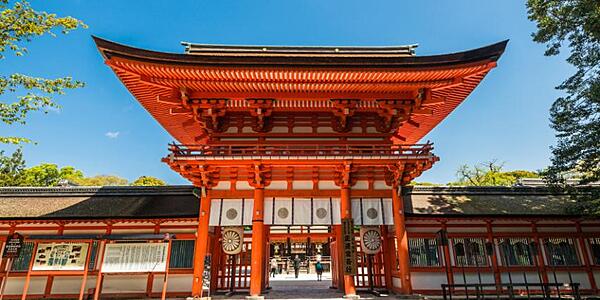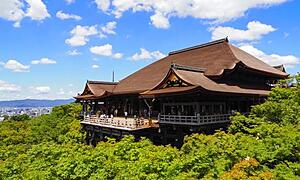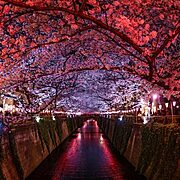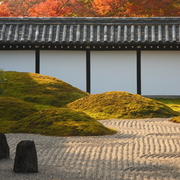
Located a bit away from the bustling downtown of Kyoto, Shimogamo Shrine (Kamo Mioya Jinja) is a tranquil oasis surrounded by expansive forests.
Known by its name due to its location downstream of the Kamo River (Kamo-gawa), this shrine is recognized as a World Cultural Heritage Site.
Shimogamo Shrine boasts numerous attractions scattered throughout its grounds, providing a nice environment for a leisurely stroll and energy recharge.
In this article, we will introduce information about the history and events of Shimogamo Shrine, as well as nearby gourmet spots.
When you visit Shimogamo Shrine, be sure to indulge in Kyoto's traditional sweets as well!
What is Shimogamo Shrine (Kamo Mioya Jinja)?
Shimogamo Shrine is a Shinto shrine located in Sakyo-ku, Kyoto City. Its formal name is 'Kamo Mioya Jinja (Shrine)' (賀茂御祖神社).
However, it is commonly known and affectionately referred to by locals as 'Shimogamo Shrine.'
Situated in close proximity to the Kamo River, this shrine offers a serene setting where one can enjoy the gentle flow of the river and the peaceful beauty of nature.
H istory of Shimogamo Shrine
The exact founding date of the Shimogamo Shrine is not known.
However, archaeological excavations within the shrine's grounds have revealed many Jomon pottery and other artifacts, suggesting its existence predates the Yamato political era.
From the Asuka period onwards and continuing into modern times, the Shimogamo Shrine has been revered by people. In the Meiji era, it was designated as one of the highest-ranking shrines in the country, known as 'Kanpei Taisha' (官幣大社), a status granted to shrines of great importance in the national context.
D eities Enshrined at Shimogamo Shrine and their Blessings
The enshrined deities at Shimogamo Shrine are 'Kamotaketsunumino-mikoto' and 'Tamayorihimeno-mikoto'.
The Main hall of Shimogamo Shrine has western and eastern halls.
Kamotaketatsumimino-mikoto is enshrined in the western hall, while Tamayorihimeno-mikoto is enshrined in the eastern hall of the main hall, designated as a National Treasure.
Shimogamo Shrine bestows blessings in accordance with its enshrined deities.
The following are some of the benefits associated with the respective deities:
Kamotaketsunumino-mikoto is associated with blessings such as world peace, abundant harvests, prosperity in industry and business, and the resolution of physical ailments.
Tamayorihimeno-mikoto is associated with blessings related to matchmaking and safe childbirth.
Highlights of Shimogamo Shrine (Kamo Mioya Shrine)
Shimogamo Shrine offers numerous captivating attractions, so take your time to explore while strolling through the grounds.
Within the shrine's premises, you will find several smaller shrines, each associated with different blessings and benefits.
Don't miss the unique Ema (votive plaques) and Omikuji (fortune-telling strips) that are exclusive to Shimogamo Shrine because items you won't encounter anywhere else.
Enjoy the distinctive offerings and experiences that make a visit to Shimogamo Shrine truly special!
【 Tadasu no Mori】is a World Cultural Heritage Site that is also Famous as a Power Spot
The 'Tadasu no Mori', a World Cultural Heritage site, boasts an area equivalent to three Tokyo Domes.
This forest, which has persevered since the Jomon period, is home to around 600 naturally grown trees, some with ages spanning several hundred years.
Walking through this forest is like stepping back in time, as one can't help but be overwhelmed by the majestic presence of the ancient trees.
A stroll through Tadasu no Mori provides a purifying experience for both the body and soul, making it an undoubtedly rejuvenating power spot !
【 Kawai Shrine】Related to the author of “Hojoki” Kamo-no-Chomei
At one of the subsidiary shrines within Shimogamo Shrine, called 'Kawai Shrine', the dwelling place of Kamo no Chomei, who is the author of 'Hojoki', 'Hojo-no An' (方丈の庵), has been reconstructed and is displayed along with relevant materials.
Please note that only the materials are currently on display due to relocation.
Kawai Shrine enshrines Tamayorihimenomikoto, drawing worshippers seeking protection and guidance, particularly in matters related to women.
Due to the exceptional beauty associated with Tamayorihimenomikoto, ema (votive plaques) depicting beauty-related prayers are quite popular.
These ema are shaped like handheld mirrors, allowing worshippers to draw facial features and makeup, creating their own original ema.
Feel free to enjoy the creative process of crafting your personalized ema !
【 Aioi-no Yashiro】The spiritual miracle of matchmaking!
Located to the left just before the main gate of Shimogamo Shrine, 'Aioi-no Yashiro' is a highly popular spot known for its divine power in matchmaking!
To the left of the shrine, the 'Renri no Sakaki' is enshrined, symbolizing the union of couples.
One of the seven wonders of Kyoto, Renri no Sakaki
The term 'Renri no Sakaki' refers to a sacred tree (shinboku) where two separate trees grow and eventually merge into a single trunk, with a new shoot emerging at the base to represent offspring.
Interestingly, it is said that when the sacred tree naturally decays, a new 'Renri no Sakaki' emerges on the shrine grounds.
The current 'Renri no Sakaki' at Shimogamo Shrine is the fourth generation, and this phenomenon is considered one of the Seven Wonders of Kyoto.
Why not take the opportunity to meet this precious sacred tree and offer prayers for matchmaking, harmonious family life, and other wishes?
Matchmaking fortune/Recommended for lovers of the Tale of Genji ♡
Shimogamo Shrine makes an appearance in The Tale of Genji (Genji Monogatari), and in connection with this, there is a popular matchmaking omikuji called the 'Genji Monogatari Omikuji'.
This omikuji is tailored for both men and women.
The women's omikuji is presented on brightly colored paper in a shape reminiscent of a twelve-layered kimono (juni-hitoe).
Upon opening, it reveals a fortune related to 'relationships' and 'encounters', accompanied by a waka (Japanese poem) inspired by The Tale of Genji.
Also, at Shimogamo Shrine, you can buy the 'Hime Mamori' (媛守) for matchmaking.
These charms are crafted from Chirimen fabric and Japanese paper, embodying the distinctive Kyoto style.
Recommended Festivals and Events at Shimogamo Shrine (Kamo Mioya Shrine)
At Shimogamo Shrine, various festivals and events take place every month, tailored to the seasons.
This time, let me introduce three popular events among them.
A oi Matsuri(葵祭)in May
The 'Aoi Matsuri' of the Kamo Shrines (Kamigamo Shrine and Shimogamo Shrine) is one of the three major festivals in Kyoto, alongside the 'Gion Matsuri' of Yasaka Shrine and the 'Jidai Matsuri' of Heian Shrine.
The Aoi Matsuri has its origins about 1500 years ago when a festival for the 'Kamo deities' was held during a period of famine and epidemic.
This festival takes place every year on May 15th, and from early May until the day of the festival, various events such as yabusame (horseback archery) are held.
On the day of the Aoi Matsuri, people dressed in Heian-period costumes form a procession and parade through the streets of Kyoto.
The elegance of their attire and the festival tools used to evoke the refined atmosphere of the Heian era, making it a spectacle worth experiencing.
H otaru-bi no Chakai(蛍火の茶会)in Early June
In early June, Shimogamo Shrine hosts the 'Hotaru-bi no Chakai' (Tea Ceremony with Fireflies) event.
On this day, around 600 fireflies collected within the shrine precincts are released along the Mitarashi River, creating a magical and enchanting scene with fireflies drifting over the stream in Tadasu no Mori.
While reservations are required for the tea ceremony※, the opportunity to observe the fireflies is free of charge. There are also summer market stalls (offering traditional sweets, pickles, and more) for everyone to enjoy freely.
※Scheduled to be held on Saturday, June 10, 2023, applications are open to those who hold membership in the Tadasunomori Foundation as of April 1.
For details, please see the official website of the Tadasunomori Foundation below.
M itarashi Sai(御手洗祭)on 10 days between the Ox Day in July
Within the precincts of Shimogamo Shrine lies the Mitarashi Pond, and it is said that during the 'doyō' season, clear water springs up from the bottom of ponds and rivers.
During the 'Mitarashi Sai', also known as the 'Foot-Soaking Ritual', held at the Mitarashi Pond, worshippers immerse their feet in the clear water, praying for good health and well-being.
This ritual, often referred to as the 'Foot-Dipping Ceremony,' attracts numerous visitors each year, creating a lively atmosphere around the pond.
Moreover, Mitarashi Pond is considered the birthplace of 'mitarashi dango' (rice dumplings). Shaped to resemble the bubbles emerging from the pond, these dumplings were named 'mitarashi dango' and have become a local specialty enjoyed by many.
Recommended gourmet spots around Shimogamo Shrine (Kamo Mioya Shrine)
Within and around the precincts of Shimogamo Shrine, there are recommended gourmet spots that I highly suggest you explore!
After strolling through Shimogamo Shrine, be sure to indulge in Kyoto's delicious sweets as well.
Enjoy your culinary adventure!
K yūkei-dokoro Saruya(休憩処 さるや)
Feeling a bit tired after walking through the expansive grounds? Would you like to take a break?
'Kyūkei-dokoro Saruya' (休憩処 さるや) is a resting place within Shimogamo Shrine where you can enjoy traditional Japanese sweets like 'mochi' and 'zenzai' while admiring the beautiful trees of Tadasu no Mori.
During the summer season, they offer a refreshing treat called 'Kamo no Himuro no Kōri', which is shaved ice with flavors like Uji Kintoki, topped with sweet red beans and ‘shiratama’ (white rice dumplings). It's a perfect way to cool down and refresh your body after a long walk!
Since they offer Japanese sweets and tea for takeout, it's also recommended for souvenirs or gifts!
Enjoy the flavors of Shimogamo Shrine at home or share them with your loved ones.
Information is subject to change. For detailed and up-to-date information, please check the official website.
K amo Mitarashi Chaya(加茂みたらし茶屋)
The 'Kamo Mitarashi Chaya' is a well-established traditional Japanese sweets shop that has been in operation since 11th year of Taisho era (1922).
It is the birthplace of Mitarashi Dango, and this shop is the only place where you can taste this unique treat.
The Mitarashi Dango at Kamo Mitarashi Chaya is renowned for its irresistible aroma of grilled dumplings and black sugar sauce.
The set of five dumplings on a skewer carries symbolic meaning, representing the five parts of the human body (the top dumpling as the head and the four dumplings below as arms and legs), believed to ward off misfortune.
In addition to Mitarashi Dango, the shop offers other delights such as Warabimochi and seasonal specialties like shaved ice and Zenzai.
Notably, the shop gained fame when members of the 9-member male idol group 'Snow Man,' visited for a YouTube shoot. Members Iwamoto Taito, Abe Ryosuke, Sakuma Daisuke, and Mukai Koji were enjoying Mitarashi Dango and Warabimochi♡
Information is subject to change. For detailed and up-to-date information, please check the official website.
D emachi Futaba (出町ふたば)
'Demachi Futaba' is an immensely popular traditional Japanese sweets shop in Kyoto, known by almost everyone in the city.
There is a daily long line of customers waiting in front of the store!
Located about a 5-minute walk from 'Demachiyanagi Station', the nearest station to Shimogamo Shrine on the Keihan Main Line, it's a must-visit when exploring Shimogamo Shrine.
Two of the most popular items at Demachi Futaba are the 'Meidai Mame-mochi' and the 'Fuku Mame Daifuku'.
The sweet red bean paste has a perfect hint of saltiness, making it incredibly delicious and tempting to eat as many as you like♡
The beans provide a satisfying texture, complementing the soft mochi.
The turnover of customers at the store is fast, so it's recommended to visit in the morning to ensure you get a chance to try these delightful treats despite the inevitable queue!
Information is subject to change. For detailed and up-to-date information, please check the official website.
Kyoto boasts plenty of beautiful and delicious traditional Japanese sweets that have been cherished since the Heian period.
Each confection, intricately tied to seasons, events, and culture, carries its own wishes and meanings.
I encourage you to explore and savor Kyoto's wagashi (Japanese sweets), allowing you to enjoy the rich culture and flavors associated with each delightful treat.
Enjoy Kyoto's traditional sweets to the fullest!
S himogamo Saryo (下鴨茶寮)
The historic restaurant 'Shimogamo Saryo' established in 1856 (the third year of the Ansei era), offers meticulously crafted dishes featuring locally sourced ingredients and Kyoto vegetables.
The elegantly presented cuisine, visually stunning, is perfect for celebrating special occasions. Not limited to lunch or dinner, you can also enjoy a traditional Japanese afternoon tea from 2:00 PM (3:00 PM on weekends) to 5:00 PM.
Why not spend a graceful teatime sipping matcha and savoring Japanese sweets while enjoying the view of the Japanese-style garden?
Information is subject to change. For detailed and up-to-date information, please check the official website.
The area around Shimogamo Shrine is not only a gourmet hotspot but also a place where you can witness Kyoto's traditional event, the 'Gozan no Okuribi' festival.
The Gozan no Okuribi festival takes place every year on August 16th. The character of 大 (dai, meaning 'large') is set ablaze on a mountain near the Ginkaku-ji, making it visible from bridges and other locations near Shimogamo Shrine.
It's a great opportunity to experience both culinary delights and the cultural richness of Kyoto, including the spectacular event of the Gozan no Okuribi festival.
About How to Get to Shimogamo Shrine
We will share the directions to Shimogamo Shrine, visiting hours, etc.
H ow to Get to Shimogamo Shrine
Address
〒606-0807
59 Shimogamo Izumigawa-cho, Sakyo-ku, Kyoto Japan
Phone Number
+81 075-781-0010
Directions
By Train:12 minutes walk from Eizan Electric Railway (Eiden) or Keihan Electric Railway (Keihan) Main Line at ‘Demachiyanagi Station’.
Get off at Kyoto City Bus stops ‘Shimogamo Jinja-mae’ or ‘Tadasu no Mori-mae’ and it's just a short walk.
【 Shimogamo Shrine】Admission Fee
Admission to areas such as "Tadasu-no-Mori" and the main shrine within the grounds is free.
However, there is a fee for special visits to designated cultural properties.
Adults: 500 yen
Junior high school students and below: Free
【 Shimogamo Shrine】Opening Hours
The main hall visitation hours at Shimogamo Shrine vary between summer and winter:
Summer Hours: 5:30 AM to 6:00 PM
Winter Hours: 6:30 AM to 5:00 PM
Please note that special visits to the 'Ooi-dono' hall are available from 10:00 AM to 4:00 PM, so kindly take note of this information.
P arking
Within the premises of Shimogamo Shrine, there are the West Parking Lot and the Large Bus Parking Lot.
As the number of spaces is limited, we recommend utilizing the paid parking facilities outside the premises.
External parking options include:
Mitsui Repark
・Shimogamo Shrine West
・Shimogamo Shrine West No. 2
・Shimogamo Shrine West No. 3
Kyoteku
・Shimogamo Nishi-dori Parking
In Conclusion
At Shimogamo Shrine, you're guaranteed a soothing experience in the lush green surroundings, ensuring a recharge of your mind and spirits!
You can also receive delightful blessings such as beautiful prayers and connections for good relationships.
Be sure to get unique Kyoto-style Omikuji (fortune-telling strips) and Omamori (charms) to enhance your experience!
Except for events and festivals, Shimogamo Shrine is not typically overly crowded. The spacious grounds allow for a leisurely visit, providing a serene atmosphere for your prayers and reflections.

In this article, we will introduce the legends, and events highlights at Kifune Shrine.
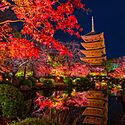
In this article, a Wagokoro editorial team member from Kyoto has carefully selected 'Top 20 Recommended Autumn Colors Spots in Kyoto'!
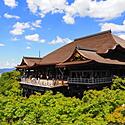
In this article, we provide info about Kiyomizu-dera Temple, including its history, highlights, and recommendations for tourism!

